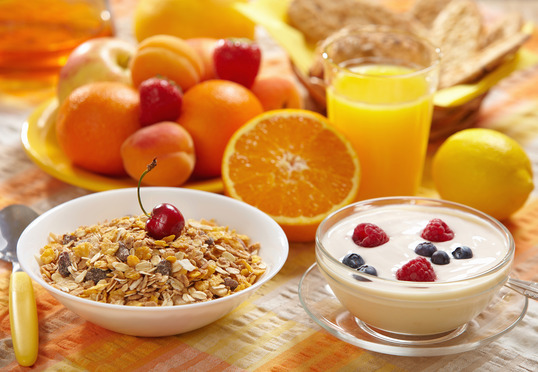
On a school morning, when you’re coaxing your child out of bed, nagging him to get dressed, to comb his hair, to pack his backpack, and to find his shoes, you’re likely feeling pretty good if you can also coerce him to wolf down a slice of toast before you’re all late for school. Add ADHD into the mix and what mother wouldn’t consider a bite of a granola bar a triumph?
Yet studies have shown that a full, nutritious breakfast can be a vital component in managing symptoms of ADHD in the classroom. Studies have also shown that not any breakfast will do.
Managing Meals
That nagging voice in your head saying, “breakfast is the most important meal of the day,” might sound like your own mother, but that voice was put there by The Archives of Pediatric & Adolescent Medicine. In 1998 they reported that kids who routinely ate breakfast won at life. These children exhibited longer attention spans, less hyperactivity, and less behavior and disciplinary issues. They also achieved higher test scores.
Even children with the best impulse control skills can still act out when they’re hungry. This is the so-called “hangry” effect. For children with ADHD, the “hangry” effect is magnified.
Skipping breakfast isn’t the only issue. What’s on the plate matters.
Metabolic Mayhem
Fasting isn’t the only cause of the “hangry” effect. Simple carbs and sugar raise blood sugar levels fast. Insulin then kicks in at a high concentration which can later contribute to an energy crash. Those spikes and plummets exacerbate mood swings, inappropriate behavior, as well as contribute to a jittery difficulty in concentrating. Add in ADHD and you’ve got a breakfast recipe for disaster.
Though many breakfast foods are full of simple carbs and sugars, like white-flour pancakes and waffles, bakery products, maple sugar, jam, and many kid-geared cereals, carbohydrates are not always the bad guys. Carbohydrates are vital to a growing child’s diet because they provide a surge of energy and a load of calories. Complex carbohydrates, such as are found in whole grains, green vegetables, sweet potatoes, and lentils, take longer to break down in the stomach and thus aren’t major culprits in the “hangry” effect.
Complex carbohydrates can help stave off hunger as well as level blood sugar oscillations, but the key element of a champion breakfast is protein. Protein takes longer to break down during the digestive process. If you provide a high-protein breakfast that includes complex carbohydrates, your kids will feel fuller for longer and avoid the sugar-fueled emotional roller-coaster.
The prospect of scrambling eggs puts a little morning pressure on any harried parent, but parents of children with ADHD have an addition element of diet and nutrition to consider.
Secret Sensitivities
Scientific studies on nutrition and ADHD have suggested provocative links between symptoms and food sensitivities. A Lancet study in 2011 determined that putting children on a specially restricted “elimination” diet caused a significant lessening of ADHD symptoms in 64% of the children in the study. Those symptoms roared back when the kids returned to their original eating habits, a powerful indicator that diet plays a significant part in ADHD.
The culprits examined in this and other studies include preservatives, food dyes, gluten, dairy, and artificial sweeteners.
Because of the pervasive nature of these elements in our food culture, removing these from the family diet is challenging. The prospect is likely to defeat any parent trying to get a kid to school and themselves to work before the late bell. But for parents of children with severe cases of ADHD, it may be worth considering an oligoantigenic or elimination diet to weed out and determine what food irritants may be exacerbating symptoms. Some research suggests that adding an Omega-3 supplement, or eating foods high in this fatty acid, helps ease symptoms.
It’s What’s For Breakfast
Some ADHD medications are known to have a dampening effect on appetite, so consider how you can reschedule the administration of meds in order to feed a hungry child before the appetite-suppressant effects kick in. Then tempt him or her with one of these protein-rich options:
• Scrambled eggs in a gluten-free wrap
• Almond butter on sesame seed toast
• Fresh organic berries stirred into yogurt
• Protein-powder-and-fresh-fruit smoothie
• Slices of hard-boiled egg on whole wheat crackers
• Additive-free sausage patty served on a gluten-free English muffin
It may mean getting up bleary-eyed a little earlier in the morning to prepare, but a protein-rich, additive-free, allergy-free breakfast will go a long way to fuel your child, and yourself, for the ADHD challenges of the day. Your child’s teacher will thank you.






